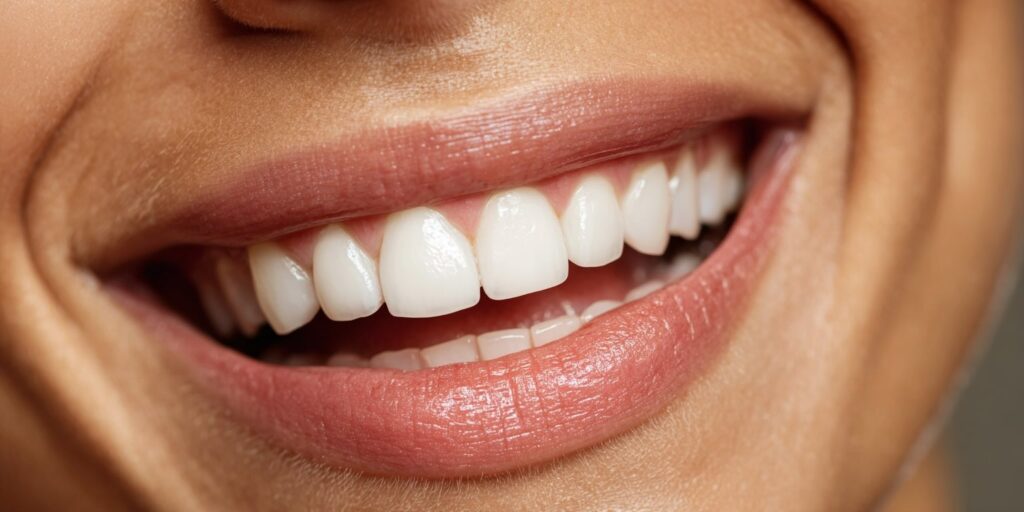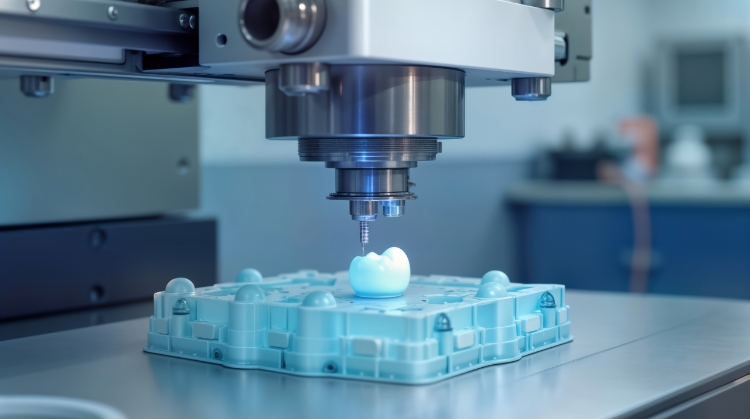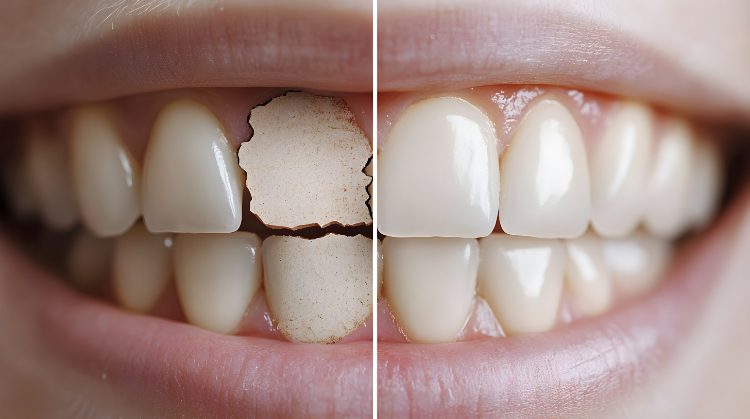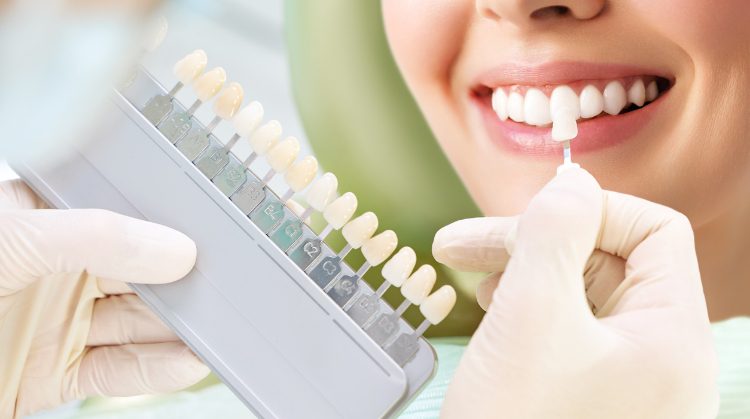By Dr. Belinda Gregory-Head, Dental Implant Partners, San Francisco
Cosmetic dentistry has advanced into a discipline where esthetics, health, and function are interconnected and inseparable. Over the course of my career, I have seen how carefully designed improvements, whether in tooth alignment, shade, or shape, can dramatically elevate not only a patient’s appearance but also their confidence, oral comfort, and long-term stability. Cosmetic dentistry today is no longer just about appearance; it is about harmonizing beauty with biology.
The science behind modern cosmetic dentistry incorporates digital imaging, advanced biomaterials, and an appreciation for facial proportions. Every procedure, from the most conservative bonding to comprehensive smile makeovers, must be carefully planned and executed to respect the underlying oral structures while delivering esthetic precision. True success comes when treatment outcomes look natural, feel comfortable, and perform functionally over time.
In this article, I will share an expert perspective on the 10 most effective and transformative cosmetic dentistry treatments. Each section will explore not only how these procedures are performed, but also why they succeed and which patients may benefit most. The goal is to demonstrate how cosmetic dentistry, when approached responsibly, can create smiles that are beautiful, durable, and fully integrated into overall oral health.

1. Teeth Whitening
Teeth whitening remains a highly popular procedure, but its effectiveness depends heavily on the type of discoloration being addressed. Extrinsic stains from dietary factors like coffee or tobacco respond well to bleaching agents, while intrinsic stains, such as those caused by tetracycline, may require more advanced approaches. Professional whitening protocols use carefully measured concentrations of hydrogen peroxide or carbamide peroxide, applied in a controlled setting to minimize the risk of sensitivity or enamel damage.
At my practice, we offer both in-office whitening with light-activated systems and customized take-home trays for patients who prefer gradual improvement. The in-office treatment can produce dramatic results within a single appointment, whereas at-home regimens allow for more subtle, progressive changes. In either case, the goal is to achieve natural brightness that enhances the smile without creating an artificial or overly opaque appearance.
The durability of whitening results varies depending on diet, oral hygiene, and lifestyle habits. Patients who frequently consume chromogenic foods or beverages may need more frequent touch-ups. Incorporating remineralizing products containing fluoride or calcium phosphates is also recommended to help strengthen enamel post-treatment, ensuring that the whitening process does not compromise long-term dental health.
2. Porcelain Veneers
Porcelain veneers are one of the most comprehensive cosmetic options, capable of addressing shape, size, alignment, and color simultaneously. Veneers are ultra-thin shells of ceramic bonded to the front surfaces of teeth, designed to mimic the translucency and reflective qualities of natural enamel. Their ability to correct multiple esthetic issues in one treatment makes them especially powerful for patients seeking a dramatic transformation.
The preparation process requires precision and restraint. Too much enamel removal can compromise tooth health, while too little may result in bulky or unnatural-looking restorations. Digital smile design and wax-up models are often used to plan the final outcome before initiating any preparation. This approach ensures that both the clinician and the patient have a clear vision of the end result.
Veneers are highly durable when supported by good oral health and proper occlusion. However, they are not a universal solution. Patients with parafunctional habits like bruxism may need protective nightguards, and those with active periodontal disease must address those issues before proceeding. When properly indicated, veneers can provide a balance of esthetics and function that lasts for decades.
3. Dental Bonding
Bonding is one of the most conservative cosmetic treatments available, ideal for repairing chips, reshaping teeth, or closing small gaps. The procedure involves applying a tooth-colored resin composite directly onto the tooth surface, which is then sculpted, cured, and polished to achieve a seamless finish. The greatest advantage of bonding is that it requires little to no removal of healthy enamel.
The artistry lies in mimicking the natural optical qualities of enamel and dentin. Different shades and translucencies of composite resin are layered to recreate the depth and vitality of natural tooth structure. This process requires not only technical expertise but also an artistic eye to ensure the restoration blends harmoniously with surrounding teeth.
Although bonding is less durable than ceramic alternatives, it remains a valuable option for patients seeking affordable and minimally invasive solutions. Over time, bonding can stain or wear, requiring maintenance or replacement. With proper care, however, it can last many years and provide a highly satisfying esthetic outcome.
4. Invisalign and Clear Aligners
Clear aligner therapy, such as Invisalign, has revolutionized orthodontics for adults and image-conscious patients. Unlike traditional braces, clear aligners are discreet, removable, and comfortable, making them highly appealing for professional adults who cannot commit to metal brackets. But beyond the cosmetic advantage, aligners also improve occlusion and periodontal health by creating better alignment and reducing plaque-retentive areas.
Treatment planning with aligners involves digital scanning, 3D modeling, and careful mapping of tooth movement. Each aligner in the series applies targeted pressure to guide teeth into their desired positions. The clinician’s role is critical in designing the staging of movements to prevent undesired tipping or extrusion, ensuring that both esthetic and functional goals are met.
Compliance is perhaps the greatest determinant of success with aligners. Patients must wear them 20–22 hours per day and follow through with refinements as prescribed. When executed properly, clear aligners can produce results comparable to traditional orthodontics, often with shorter treatment times and far greater convenience.

5. Dental Implants
Dental implants are the gold standard for replacing missing teeth, offering both cosmetic and functional benefits. Unlike bridges or dentures, implants are anchored directly into the jawbone, providing stability that closely mimics natural tooth roots. This prevents bone loss, maintains facial structure, and allows for restorations that look and feel like natural teeth.
Digital planning software and guided surgical techniques are used to ensure precise placement. This is critical not only for aesthetics, such as ensuring a natural emergence profile, but also for long-term function under occlusal load. The materials used, such as titanium and zirconia, offer exceptional biocompatibility and durability.
Successful implant therapy often requires a multidisciplinary approach. Bone grafting, sinus lifts, or soft tissue augmentation may be necessary to create an optimal foundation. Although implants represent a greater investment in terms of time and cost, they remain the most predictable and esthetically pleasing long-term solution for tooth replacement.
6. Gum Contouring and Reshaping
The symmetry and proportion of gum tissue play a crucial role in the beauty of a smile. Excess gingival display or uneven contours can detract from even the most attractive teeth. Gum contouring allows me to sculpt the gingival margin for a more harmonious appearance, often using advanced laser technology for precision and comfort.
Laser-assisted contouring reduces bleeding, minimizes discomfort, and accelerates healing compared to traditional scalpel techniques. The tissue is simultaneously cauterized during treatment, lowering the risk of infection and producing predictable outcomes. This technology is particularly effective for patients with gummy smiles or gingival overgrowth.
Beyond aesthetics, contouring can also improve oral health by eliminating pseudo-pockets and creating margins that are easier to clean. This dual benefit makes gingival reshaping a cornerstone procedure in cosmetic dentistry, bridging the gap between appearance and function.
7. Dental Crowns
Dental crowns serve both restorative and cosmetic purposes, making them a versatile treatment option. Unlike veneers, which only cover the front surface, crowns encase the entire tooth, providing strength and protection in addition to esthetic improvement. Crowns are particularly valuable for teeth that are structurally compromised by decay, fractures, or root canal therapy.
Modern crown materials such as all-ceramic zirconia or lithium disilicate (e.max) offer outstanding strength while maintaining translucency comparable to natural enamel. CAD/CAM technology is frequently used to design crowns with precise occlusal morphology, ensuring functional harmony with the patient’s bite. This digital workflow improves both accuracy and efficiency, reducing the need for multiple adjustments.
Esthetically, crowns can be indistinguishable from natural teeth when shade-matched and contoured properly. They can also serve as part of larger treatment plans, supporting bridges or capping implants. For patients with extensive wear, erosion, or damage, crowns remain one of the most reliable solutions for restoring both function and beauty.
8. Inlays and Onlays
Inlays and onlays, sometimes called “partial crowns,” represent a conservative alternative to full-coverage restorations. These restorations are ideal for cases where tooth structure is too compromised for a simple filling but not damaged enough to justify a full crown. They provide excellent strength while preserving as much natural enamel as possible.
Fabricated from porcelain or composite resin, inlays and onlays are custom-made to fit precisely into the prepared tooth. Unlike large direct fillings, which can shrink or weaken over time, these restorations bond securely to enamel and distribute occlusal forces more evenly. This makes them a long-lasting and esthetic option, particularly for posterior teeth.
From an esthetic perspective, porcelain inlays and onlays blend seamlessly with surrounding dentition, avoiding the dark lines or mismatched colors associated with older restorative materials. Their conservative nature makes them one of my preferred treatments for patients seeking both beauty and structural integrity.
9. Orthodontic Accelerators and Adjuncts
Advances in technology have introduced adjunctive treatments designed to accelerate orthodontic movement. Devices such as micro-osteoperforations, vibration-based appliances, or low-level laser therapy can stimulate bone remodeling, allowing teeth to move more efficiently. For patients undergoing Invisalign or braces, these adjuncts can shorten treatment times significantly.
The biological principle behind these devices is to enhance the turnover of alveolar bone, which is essential for tooth movement. In my experience, when combined with careful treatment planning, accelerators can reduce discomfort and make orthodontic treatment more tolerable for patients. They are particularly valuable for adults, who often have slower bone metabolism compared to adolescents.
While not every patient is a candidate for accelerated orthodontics, the technology represents an exciting development in cosmetic dentistry. For motivated patients, it offers a way to achieve straighter teeth and improved smiles in a fraction of the usual time, without compromising safety or predictability.
10. Smile Makeovers (Comprehensive Treatment Plans)
The most transformative results often come from combining multiple cosmetic and restorative treatments into a cohesive plan. A smile makeover is not simply a collection of procedures, but a carefully staged process that integrates esthetics, function, and biology. It requires a deep understanding of occlusion, facial proportions, and dental materials.
Every makeover begins with a thorough diagnostic phase, including photographs, digital scans, wax-ups, and sometimes CBCT imaging. This process makes it possible to design a roadmap that sequences treatments logically, such as aligning teeth orthodontically before placing veneers or ensuring implants are placed prior to finalizing the esthetic restorations. The planning phase is as critical as the execution.
Ultimately, a smile makeover is about harmony. Every decision, from the contour of a veneer to the shade of a crown, is made with the patient’s facial features, personality, and lifestyle in mind. The goal is to deliver a smile that looks natural, functions flawlessly, and lasts for decades.
Final Thoughts
Cosmetic dentistry is far more than superficial enhancement; it is an integration of science, technology, and artistry designed to create smiles that are both beautiful and healthy. Treatments like whitening, veneers, bonding, aligners, implants, gum contouring, and comprehensive makeovers each serve unique roles, but all require careful planning and expert execution. My philosophy is always to balance aesthetics with function, ensuring that patients achieve long-lasting results that feel as natural as they look.
If you are considering cosmetic dentistry, the first step is an individualized consultation. Every mouth is unique, and the best treatment plan will depend on your current oral health, functional needs, and esthetic goals. With the right approach, cosmetic dentistry can truly transform not just your smile, but your confidence and quality of life.

About Dental Implant Partners
At Dental Implant Partners, I have dedicated more than 25 years to providing exceptional prosthetic and restorative dentistry in San Francisco. Over time, our practice has grown into a team of highly skilled prosthodontists, general dentists, and hygienists who share a deep commitment to excellence in patient care. What makes our team unique is that our hygienists are trained as dentists themselves and have been with us for many years. Their expertise and long-standing relationships with patients bring a level of continuity and trust that is rare in modern dental practices.
We provide the full spectrum of restorative and cosmetic treatments, from simple fillings and veneers to advanced rehabilitations involving dental implants. For patients who are not candidates for implants, we also specialize in designing dentures that are functional, comfortable, and esthetically pleasing. Every treatment plan we deliver is tailored with precision and care, guided by the principle that oral health and smile esthetics should work in harmony. Our suite overlooking the San Francisco Bay is designed to reflect the calm, beautiful results we strive to create for every patient.
Restoring smiles has always been at the heart of my work, and nothing is more rewarding than seeing the confidence return to patients after a thoughtful treatment journey. If you are considering cosmetic dentistry or exploring dental implant options, I invite you to schedule a consultation with us. At Dental Implant Partners, we love our work and we would love to help you achieve the smile you have always wanted.




